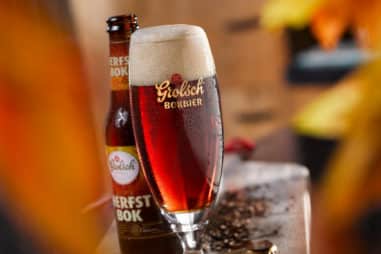Tasting American Brown Ale is an exciting journey into rich malt flavors, subtle hop notes, and a wonderfully smooth mouthfeel. Whether you’re a seasoned beer enthusiast or just beginning your craft beer exploration, knowing how to taste this style like a pro can deepen your appreciation and make each sip more rewarding. This guide will walk you through the steps and techniques of properly tasting American Brown Ale, from the glassware you choose to recognizing those signature flavor layers. Let’s dive into the art of savoring this flavorful ale.
Preparing to Taste: Glassware and Environment
Before you even pour that first drop of American Brown Ale, the stage you set matters. Choosing the right glassware enhances the aromas and flavors, while a well-chosen environment helps you focus on the experience without distractions.
For American Brown Ale, a tulip glass or a snifter is ideal. These glasses have a wider bowl that allows the beer to swirl, releasing complex aromas, while the narrower opening concentrates those scents towards your nose. If specialized glasses are unavailable, a standard pint glass can work, but the experience won’t be quite as nuanced.
As for the environment, a calm, well-lit space free from overpowering smells is best. You want to give your senses room to fully explore the beer’s characteristics. Ambient noise should be minimal, and be sure to serve the beer at a slightly cool temperature—typically around 50-55°F (10-13°C). This temperature range unlocks the malt richness and hop character without dulling the taste buds.
Visual Inspection: Color and Clarity
Once your glass is filled, take a moment to appreciate the American Brown Ale visually. Hold the glass up to a light source and observe the color and clarity.
American Brown Ales generally showcase a spectrum of deep amber to dark brown hues, often with reddish or mahogany highlights. The color gives insight into the malt bill of the brew—darker shades suggest roasted malts with nutty or caramel flavors.
Clarity can vary depending on the brewery’s filtering process. Some American Brown Ales are crystal clear, while others might have a slight haze that can add to the perceived mouthfeel. The beer’s head is another visual element—look for a creamy, tan foam that lingers with good retention, signaling a well-crafted ale.
Aroma Assessment: Malt and Hops
The aroma is a critical component when tasting American Brown Ale. Swirl the beer gently in the glass to release volatile aromatics, then bring the glass to your nose and inhale deeply. What you smell is the prelude to the taste experience.
The malt profile is typically dominant, offering notes of caramel, toffee, chocolate, and toasted nuts like hazelnut or walnut. These aromas come from the use of specialty malts such as crystal, chocolate, or roasted malts.
American Brown Ales also feature a hop presence, often from American-grown varietals. Expect subtle citrus, pine, or floral hints that balance the malt sweetness without overpowering it. Some aroma aromas may also reveal hints of earthiness or spice, depending on the specific brew.
Taking the First Sip: Mouthfeel and Flavor
Now for that all-important first sip. Take a moderate amount of the ale into your mouth and allow it to roll across your palate before swallowing. Focus on the mouthfeel—the texture and body of the beer.
American Brown Ales usually have a medium body that feels smooth and slightly creamy. Carbonation should be moderate, offering a gentle effervescence that lifts the flavors without feeling harsh. The balance between sweetness and bitterness is key here; you want to taste the malt’s richness against the hop bitterness, which keeps the ale from becoming cloying.
As you savor this initial sip, pay attention to the progression of flavors—how the sweet caramel notes mingle with roasted undertones and subtle hop bitterness.
Identifying Flavor Layers and Characteristics
One of the joys of tasting American Brown Ale like a pro is uncovering its complex flavor layers. This beer style boasts an impressive depth created through a blend of malt varieties and hop profiles.
As you continue tasting, try to break down what you’re experiencing:
- Malt Characteristics: Caramel, toffee, chocolate, nuts, and sometimes a faint coffee or molasses note.
- Hop Influence: Citrus brightness, pine resin, earthy or spicy hints that balance the malt base.
- Additional Complexity: Toasty breadiness, slight smokiness, or sweet fruitiness like plum or raisin in some variants.
This layered tasting experience helps reveal the brewer’s artistry and the unique personality of that particular American Brown Ale.
Common Tasting Notes to Expect
While each American Brown Ale has its distinctive traits, there are some common tasting notes you can anticipate, making it easier to compare and describe these beers:
- Caramel and toffee: Often the primary malt sweetness that forms the backbone of the flavor.
- Nutty flavors: Hazelnut, walnut, or almond nuances add richness and complexity.
- Chocolate and roasted malt: Subtle roasted qualities, sometimes reminiscent of milk chocolate rather than bitter espresso.
- Citrus and pine hops: American hops usually lend zesty orange, grapefruit, or pine aromas and flavors to provide balance.
- Medium bitterness: Enough hop bite to prevent the beer from being too sweet or heavy.
- Earthy and spicy notes: Some ales carry a gentle herbal or spicy undercurrent.
Keeping a Tasting Journal
To improve your tasting skills and track your preferences over time, keeping a tasting journal is invaluable. This simple practice allows you to record your observations and compare different American Brown Ales or other beer styles.
In your journal, consider noting:
- Beer name, brewery, and date
- Appearance: color, clarity, and head quality
- Aroma descriptors
- Flavor details, including malt and hop notes
- Mouthfeel and carbonation
- Overall impression and rating
Reviewing your journal can transform your tasting approach from casual drinking to an informed and enjoyable craft beer adventure.
Enhancing Your Beer Tasting Experience
Tasting American Brown Ale like a pro isn’t just about identifying flavors—it’s about engaging all your senses and approaching the experience mindfully. Taking your time with each sip, comparing different versions, and discussing your thoughts with fellow beer lovers can elevate your enjoyment.
Pairing American Brown Ale with complementary foods can also highlight elements of the beer. Nutty cheeses, roasted meats, caramel desserts, and grilled vegetables enhance the maltiness and balance bitterness. Remember, pleasant surroundings, good company, and a curious palate are your best tools to savor this robust and flavorful ale.
So next time you pour yourself an American Brown Ale, don’t rush. Take a breath, observe, smell deeply, and sip thoughtfully—you might just discover new layers and complexities you never noticed before.







